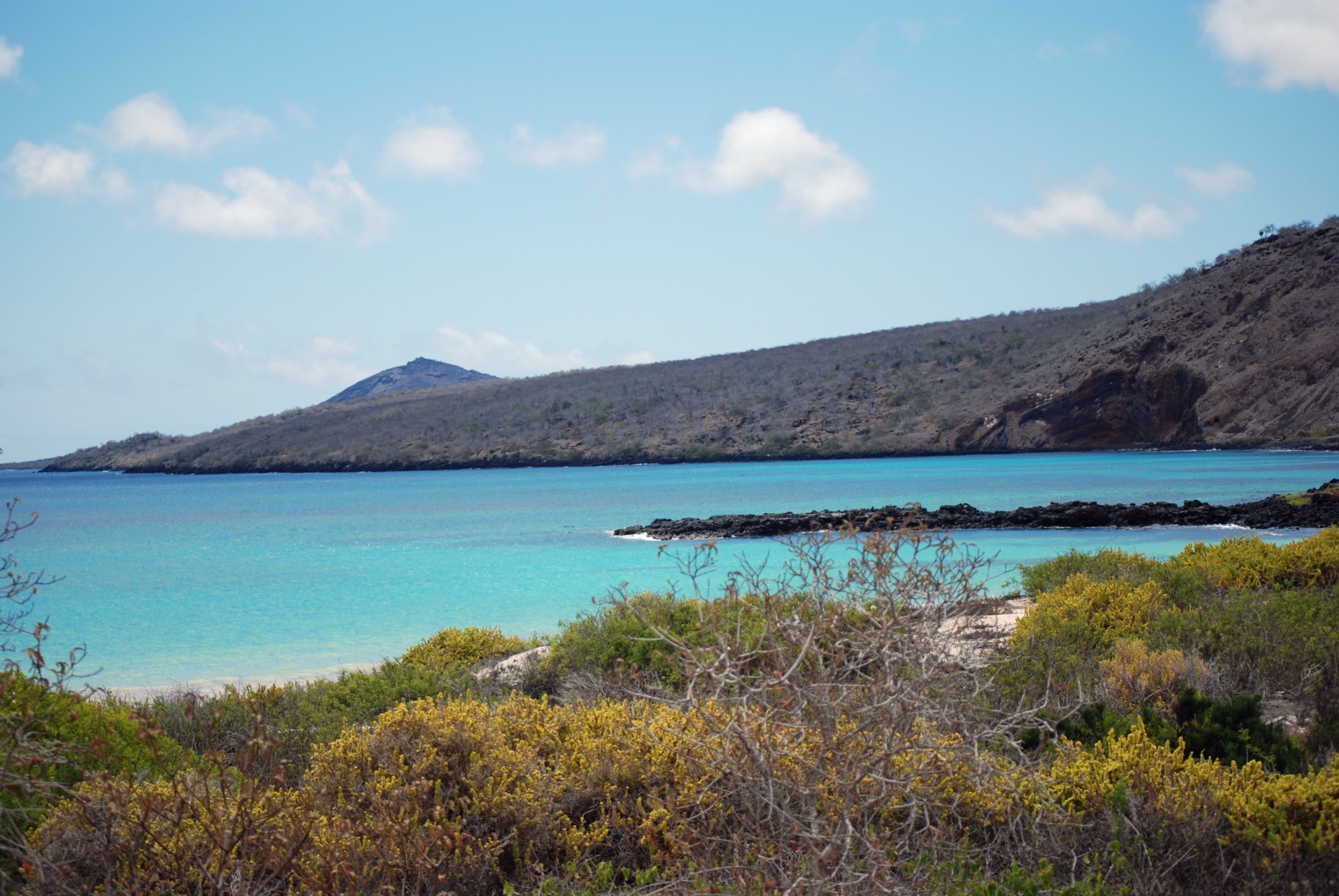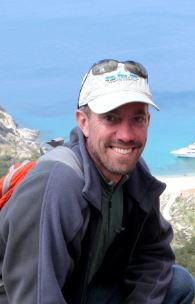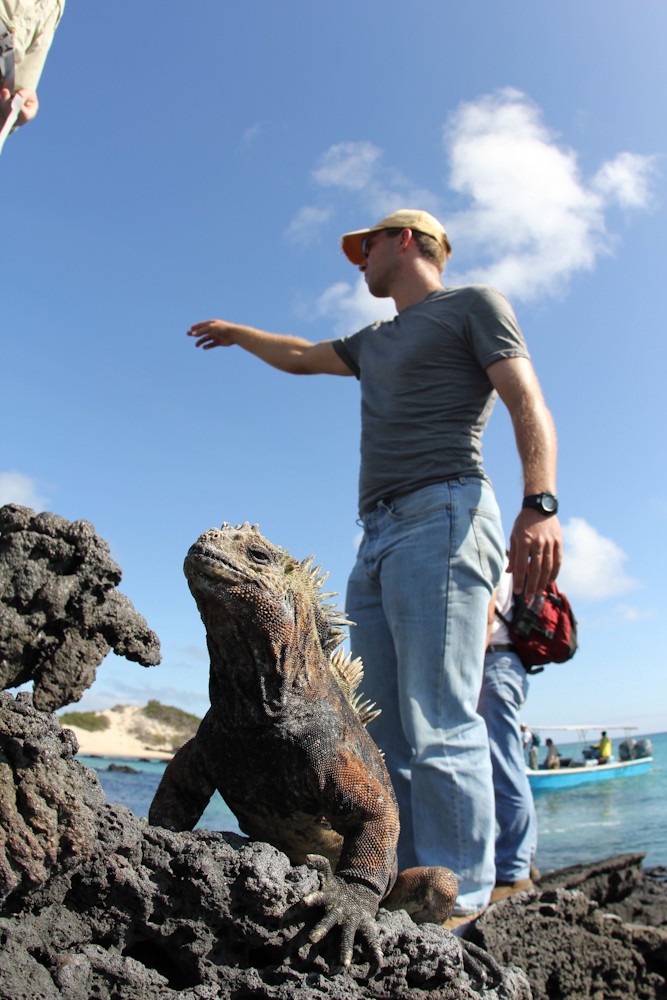

The eradication would begin on Floreana Island in October. If all went well, the rodents would be dead by Thanksgiving, the feral cats, by Easter.
Killing in the name of saving, I’ll admit, seems counterintuitive. But under the right circumstances, eradication is a remarkable tool of conservation and rapid recovery. The smallest of the Galápagos’s four inhabited islands at 66 square miles, Floreana has a human population of 140. It’s also where 56 threatened species on the International Union for Conservation of Nature’s Red List are unhappily marching their way to the brink of extinction. And, as Karl Campbell told me, invasive rats, mice, and cats are the ones pushing them there.
Campbell works for Santa Cruz, Calif.-based Island Conservation, a nonprofit group that spearheads projects to remove invasive species in order to protect and restore endangered populations of unique endemic ones: birds, trees, plants, and mammals crucial to local ecosystems. Over the last 20 years, the organization has protected 389 species on 52 islands from the threat of extinction, in places like Alaska’s Aleutians to California’s Channel Islands, down to Baja, Mexico and Ecuador’s Galápagos, and out to Hawaii and other Pacific archipelagos.

As Island Conservation’s animal removal specialist, “‹Campbell is the global go-to guy for this kind of thing. Islands are the front lines of extinction on the planet. They have an outsize richness of biological species: 20 percent of all bird, reptile, and plant classifications on less than 5 percent of the world’s landmass. This makes eradication work on islands one of the most effective ways to battle extinction. Helicopter missions”‹, sniper fire, “‹hyper-sexed “‹”Judas goat”‹s,” Tomahawk live traps, poisoned bait, radio collars to track the last holdouts to their burrows–all of it might seem a bit over the top. But there is, in fact, a documented record of nearly 1,200 successful eradications of invasive vertebrates on islands in the last 400 years. Simply put, eradication works.
An Australian by birth, Campbell has lived in the Galápagos for nearly 20 years. He first worked as the field operations specialist for Galápagos National Park and the Charles Darwin Foundation on Project Isabela, which in 2006 completed the extermination of more than 100,000 invasive goats responsible for destroying delicate island ecosystems. To date, this is the largest invasive mammal removal project ever undertaken in the world.
These days, he is gearing up to launch the most ambitious project yet, on Floreana, where the major challenge is one his team has not faced before: a permanent human population on the island. All other projects have been stepping stones to this one. “We’ve been driving these extinctions,” he said. “The next logical step is to work on these inhabited islands, where the need is greatest.”
What does it mean to deal with the human element on Floreana? Campbell said it’s community building that’s critical to any project’s success. “One of the aspects we do poorly in the name of conservation is to impose our own values on the community,” he explained. “If you can come in and help locals identify what’s important to them first, and help them accomplish their goals in this big picture–making the success of the project everybody’s ownership–the benefits of the whole will be bigger than just saving 56 threatened species and reintroducing 13 species extinct to the island.” The local community’s primary concern is livelihood: agricultural production, traditionally, and ecotourism, more recently. That’s where the value of this project emerges.
“Someone might say, “‘Do I really care about this seabird?’ Well, ecotourism is a natural resource-based activity. So it’s about giving people the information and letting them come to their own conclusions,” Campbell said. Offering case studies, like an island in New Zealand that now gets 90,000 eco-tourists a year after a successful rat eradication, allows locals to paint a vision of how they might potentially see their own island.
This kind of personal investment requires patience: Campbell and Island Conservation have been working full time with Floreana’s residents since 2012, identifying risks and benefits while establishing relationships with the local community. One of the biggest hurdles is addressing their fears–concerns about the safety of rodenticide use on water sources, for instance. “Even though the active ingredient isn’t soluble in water, you still have to manage perception,” Campbell explained. “You can disconnect the water system for a period of time, or you can have reserves of water. I wouldn’t expect locals to do anything I wouldn’t do myself, or with my family–and I tell them “‘I’m actually going to be here in your shoes.'” It’s hard work–and it’s why this has never been done before. But the team has been making progress: Nearly all the pet cats on the island, for example, have already been sterilized–so that they will no longer contribute to growth of the feral cat population there.
Ever since a Radiolab piece aired in 2014 that made extravagant use of silencer shooting sound effects, “everyone thinks I was using a rifle since I was 6 months old,” Campbell told me, laughing. In fact, as a 9-year-old obsessed with endangered-animal conservation, he began to raise zebra finches and parrots in captivity–eventually, to his parents’ chagrin, there were 300-plus birds living in his backyard. He later studied natural systems and wildlife management at the University of Queensland, traveling to the Galápagos for an internship. He came back after graduation and never left.
“You see these end species that are blanking out, and you can bring them into captivity. But if you don’t have the habitat to put them back in, then you’re basically keeping them in zoos for the rest of their days. You’re waiting for someone to get some habitat cleared of what the extinction threat is. But here, we know what that is,” Campbell emphasized..

Two of the main endangered species Island Conservation hopes to reintroduce post-eradication are the Floreana giant tortoise and the Floreana mockingbird, both locally extinct on their namesake island. “The rats eat baby tortoise eggs, and the tortoises never get into the population. When the old guys die, that’s it. It’s so clear across the board,” Campbell said. Rodents on Floreana also consume seabird eggs and endemic plants, and distribute infectious diseases that can spread to humans, like leptospirosis. Feral cats carry disease, too, and wreak havoc on chickens in town.
The tangible benefits of Island Conservation’s work are wide-ranging, from both a species and geographic standpoint. Wild, rugged Anacapa Island, one of the Channel Islands, was the first successful eradication project completed in North America. The 2001 operation removed invasive black rats that had been decimating locally endangered seabird populations. Working with the National Park Service, Campbell’s team did a staggered, aerial helicopter bombing with poisonous bait, using GPS to keep it out of the water and off the mainland, and on-the-ground work to reach the areas with the steepest cliffs and roughest terrain. They also protected the native population of deer mice from rodenticide by performing a high-tech extraction op, holding a representative population of them in captivity for a year (they also did this with peregrine falcons and other raptors), and reintroducing them afterwards (populations rebounded to pre-eradication levels within months). Seabirds like Xantus’s murrelets doubled their hatching success, and Cassin’s auklets began nesting on Anacapa where they hadn’t before. Anacapa also hosts the largest breeding populations of endangered California brown pelicans and western gulls in the world.
Farther north in the Aleutians, Rat Island was renamed Hawadax after a 2008 rat removal. The ecosystem, part of the Alaska Maritime National Wildlife Refuge, had been decimated by the introduction of rats via shipwreck. Monitoring shows that seabird colonies of tufted puffins, ancient murrelets, Cassin’s auklets, and others have now reestablished themselves. And earlier this year, an invasive European rabbit removal project on Chile’s Choros Island was declared a success, allowing native plants and populations of the Humboldt penguin and Peruvian diving petrel to recover on the national reserve.
Floreana presents the first global opportunity to eradicate invasive animals on a populated island that would provide benefits for both people and nature. And it could offer a model for similar eradications worldwide. For Campbell, it’s less about eradicating rodents and cats and more about figuring out how a conservation project can interact successfully with people. Though preparation is years-long–community building, technical planning, and fundraising the necessary $14 million will not be complete until 2018–the eradication itself will only take a few months. “If we start before Halloween, it’ll all be over by Easter,” Campbell said. Then the exciting stuff begins: watching the species come back.
Recovery is startlingly quick and has its fair share of surprises. In 2012, two years after rodent eradication on the Galápagos’s Rábida Island, Island Conservation’s ecological monitoring teams were amazed to rediscover two species of snails last collected between 1905 and 19066 by a California Academy of Sciences expedition and thought to be extinct. They also discovered a species of gecko that had never before been seen alive on Rábida–it had only been previously identified in skeletons and fossil traces dating back 5,000 years. “There was a really small population just holding on–if you get rid of the main threat, they can recover naturally without help,” Campbell said. “You don’t have to keep intervening if you do the right intervention.”


How We Get To Next was a magazine that explored the future of science, technology, and culture from 2014 to 2019. This article is part of our Nature & Climate section, which looks at how human activity is changing the planet–for better or worse. Click the logo to read more.
